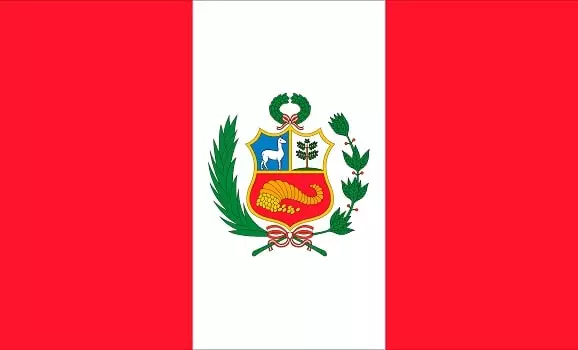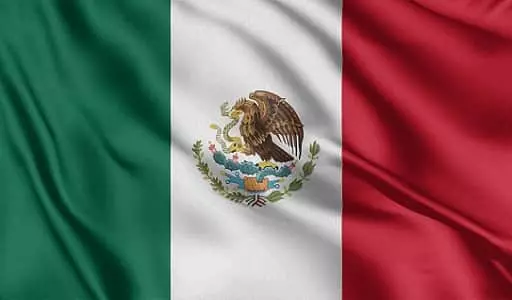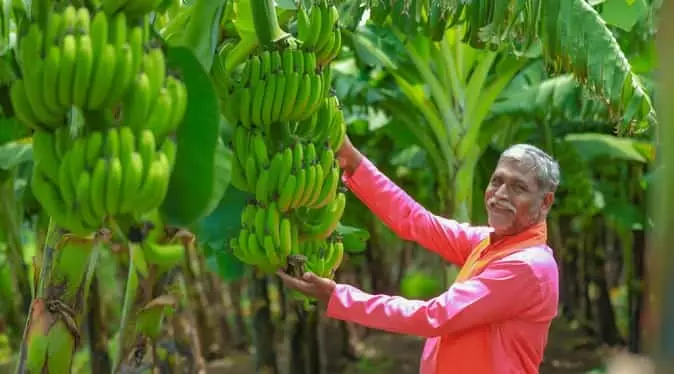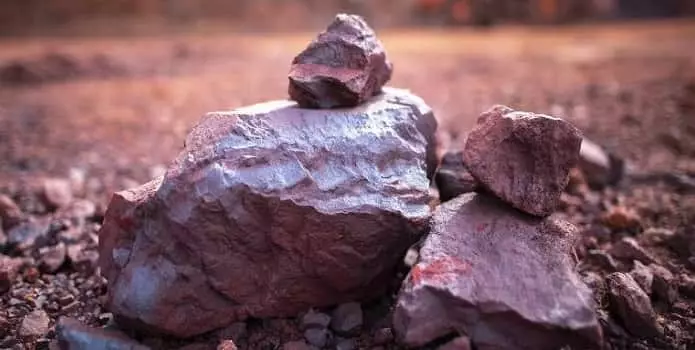Concentrates of copper are frequently shipped to other nations so that they can be melted down. The amount of copper that is produced in a country’s smelters and the amount that is mined might be very different.
Copper has always been valuable commodity; but, due to its involvement in the production of renewable energy technologies, demand for copper is expected to continue to rise over the next few decades, which will cause prices to continue to skyrocket as well.
To fulfill the strong demand for copper, several countries that have an abundance of the red metal are expanding their investments in copper mining & exploration to record levels. However, the nations that produce the most copper are facing a number of obstacles.

Top Leading Countries of Copper Production
Here is the list of leading copper production countries in the world:
1. Chile

According to the US Geological Survey, it is believed that the country in South America is home to about a quarter of the world’s copper deposits, which amounts to approximately 200 million tons.
The copper mines of Chile produced a combined of 5.7 million tons in the year 2020, with some of the largest projects in the world located at Escondida, Collahuasi, and El Teniente respectively.
Since then, production has become more unstable, with challenges like as a new taxes & royalties bill that penalizes producers and a protest at the Andina mines that lasted for an entire month, both of which contributed to the nation recording its lowest January results in a decade.
Copper is produced in the greatest quantity on a yearly basis in Chile. Copper production in Chile reached a record high of 5,831,600 metric tonnes in 2018, continuing a trend of production that has above 5.5 million metric tonnes annually for the past few years.
The Andes Mountains are home to the world’s largest porphyry copper deposit, which may be found in those mountains. Since the beginning of the 21st century, Chile has been the top producer of copper on a global scale.
2. Peru

The disruptions caused by COVID-19 were to blame for the little decrease in copper production that occurred in Peruvian mines in the year 2020, which totaled 2.2 million tonnes.
Analysts had high hopes for a recovery, but the previous year was marred by a rise in mining tax as well as demonstrations and blockades that halted production at Las Bambas plant and came dangerously close to causing it to be shut down entirely. These dangers still exist today.
Copper is one of Peru’s primary exports, making the country the world’s second-largest producer. In 2018, Peru generated 2,436,951 metric tonnes of copper, and in 2019, the country is expected to produce more than 2.5 million metric tonnes. Copper production in Peru saw a 77% growth from 2015 to 2019 as a whole. It is anticipated that Peru’s rise in copper production will outstrip that of Chile, and that Chinese investment will play an increasingly significant role in Peru’s copper industry.
3. China

It is anticipated that China mined 1.7 million tons of copper in the year 2020; however, the country also relies on imports to try to compensate for the 14 million tons of copper it uses year, which is more than the remainder of the world coupled.
The Chinese production industry has been plagued with difficulties for decades, the most recent of which was an energy crisis; as a result, the country is concentrating on constructing mines in other countries.
Copper was produced in China at a rate of 1,561,100 metric tonnes in 2018. This is a somewhat smaller total than what it produced in 2015, 2016, & 2017 combined. China is the largest user of copper in the world, and the country also acquires the same amount of copper from other nations as it produces on its own. On the other hand, it is anticipated that China will cut back on its copper import in the year 2020.
4. Democratic Republic of the Congo

The Democratic Republic of the Congo is not only the leader in cobalt output but also a large and increasing copper producer. They expect to mine 1.3 million tonnes of copper by the year 2020.
Once it achieves capacity, the Kamoa-Kakula Copper is anticipated to become the world’s second biggest copper mine, behind only Chile’s Escondida mine. Construction on the project began a year earlier than originally scheduled.
Copper was produced in the amount of 1,239,059 metric tonnes by the Republic of the Congo in 2018. The Copper Belt in the Katanga Province in the country’s south is where the vast bulk of the country’s copper is mined. China, much like Peru, has made investments in copper mining in the Democratic Republic of the Congo.
Most recently, the nation’s state-owned mining corporation, Gécamines, inaugurated a processing plant and mine for copper and cobalt at the Deziwa property. The mine & processing plant in question are both components of a partnership that is primarily owned by a metal mining firm based in China.
The Democratic Republic of the Congo is blessed with an abundance of exceptional natural assets, including hydropower potential, considerable arable land, an enormous diversity of plant and animal life, and the world’s second largest rainforest. Some of the minerals found in the DRC include cobalt and copper.
The export market for refined copper is worth $4.06 billion, while the markets for copper ore ($544 million) and unrefined copper ($249 million) are equally significant.
5. USA

With a projected production of 1.2 million tonnes of copper in 2020, the United States completes the list of the top 5 copper producing nations in the world.
Around 3 quarters of production comes from Arizona, which is expected to expand even further following the inauguration of BHP and Rio Tinto’s proposed Resolution Copper project, despite the fact that the project is being met with opposition.
In 2018, the United States generated 1,220,000 metric tonnes of copper, placing it in fifth place among the world’s major producers of copper. This is a marginally lower total compared to the preceding years.
Montana, Nevada, New Mexico, Utah, and Arizona are the leading states in terms of copper production in the United States. The Southwest area of the United States is responsible for the majority of the nation’s copper production.
6. Australia

Australia is projected to contain the world’s second greatest copper deposits after Chile, and these reserves are located in all of the country’s states and territories. In 2020, Australia will be the world’s 6th largest copper producer. With the mining industry constituting the largest part of the economy, it is highly possible that Australia will move upwards in the rankings in coming years as a result of the increased focus on copper being placed on by mining corporations of all sizes.
7. Zambia

Copper production in Zambia reached its all-time high of 720,000 tonnes in the 1970s, but it has since been steadily decreasing. According to Fitch Solutions, production is expected to increase by an average of 2.2% between 2012 and 2030. The discourse of resource nationalism that is used in Zambia, combined with the country’s precarious debt condition, will be a crucial factor in preventing future investment in copper mines.
8. Russia

Russia is now ranked tenth on the list of countries that produce the most copper, and it is anticipated that the country will produce 820,000 metric tonnes of copper in 2021. Copper production experienced a number of ups and downs over the course of the observed time period, reaching an all-time high of 883,000 metric tonnes in the year 2012. As a result of the situation in Ukraine and the sanctions imposed by Europe, the company has decided to shift its focus to new markets, such as China.
9. Indonesia

Copper concentrate exports could be prohibited beginning in 2023 if Indonesia goes ahead with current plans. At the moment, the majority of Indonesia’s copper concentrates are shipped to other Asian countries like China, with Japan receiving only a minor portion of them.
10. Mexicco

CAMIMEX revealed that Mexico produced 732,863 tonnes of copper in 2018, which is a drop of 4.6% compared to the 768,542 tonnes that will be produced in 2020. Copper, on the other hand, was responsible for exports in excess of US$18 billion, and it, along with other metals, contributed around 8.3% of the nation’s GDP.
World Copper Production FAQs
Q1. What are the top copper-producing countries in the world?
Ans: The top copper-producing countries in the world are Chile, Peru, China, the United States, and Australia. These countries have significant copper deposits and invest heavily in copper mining and production.
Q2. How is copper production measured?
Ans: Copper production is typically measured in metric tons or kilotons (1 metric ton equals 1,000 kilograms). It refers to the amount of copper extracted from mines and refined into usable forms within a specific time period.
Q3. What are the primary uses of copper?
Ans: Copper is a versatile metal with various applications. It is commonly used in electrical wiring, plumbing, construction, industrial machinery, telecommunications, and transportation (including vehicles and trains). Copper’s excellent electrical and thermal conductivity, corrosion resistance, and malleability make it valuable in numerous industries.
Q4. How is copper mined?
Ans: Copper is primarily mined through two main methods: open-pit mining and underground mining. In open-pit mining, large excavations are made in the earth’s surface, and the copper ore is extracted using heavy machinery. Underground mining involves digging tunnels or shafts to access the copper deposits.
Q5. What factors influence copper production?
Ans: Several factors influence copper production, including the availability and quality of copper deposits, technological advancements in mining and extraction methods, commodity prices, government regulations, infrastructure development, and environmental considerations.
Q6. Is copper production environmentally sustainable?
Ans: Copper production can have both positive and negative environmental impacts. Mining operations can cause deforestation, habitat destruction, soil erosion, and water pollution if not properly managed. However, efforts are being made to mitigate these impacts through sustainable mining practices, recycling initiatives, and the use of cleaner technologies.
Q7. What is the future outlook for copper production?
Ans: The future outlook for copper production is positive due to increasing global demand. Copper is essential for renewable energy technologies, electric vehicles, and the growing infrastructure needs of developing countries. However, the availability of high-grade copper deposits and environmental concerns may pose challenges to meeting future demand.
Q8. What role does recycling play in copper production?
Ans: Recycling plays a significant role in copper production. Copper is a highly recyclable metal, and recycling helps conserve natural resources, reduce energy consumption, and lower greenhouse gas emissions. Recycled copper can be reprocessed and used in various applications, reducing the need for new mining and extraction.














